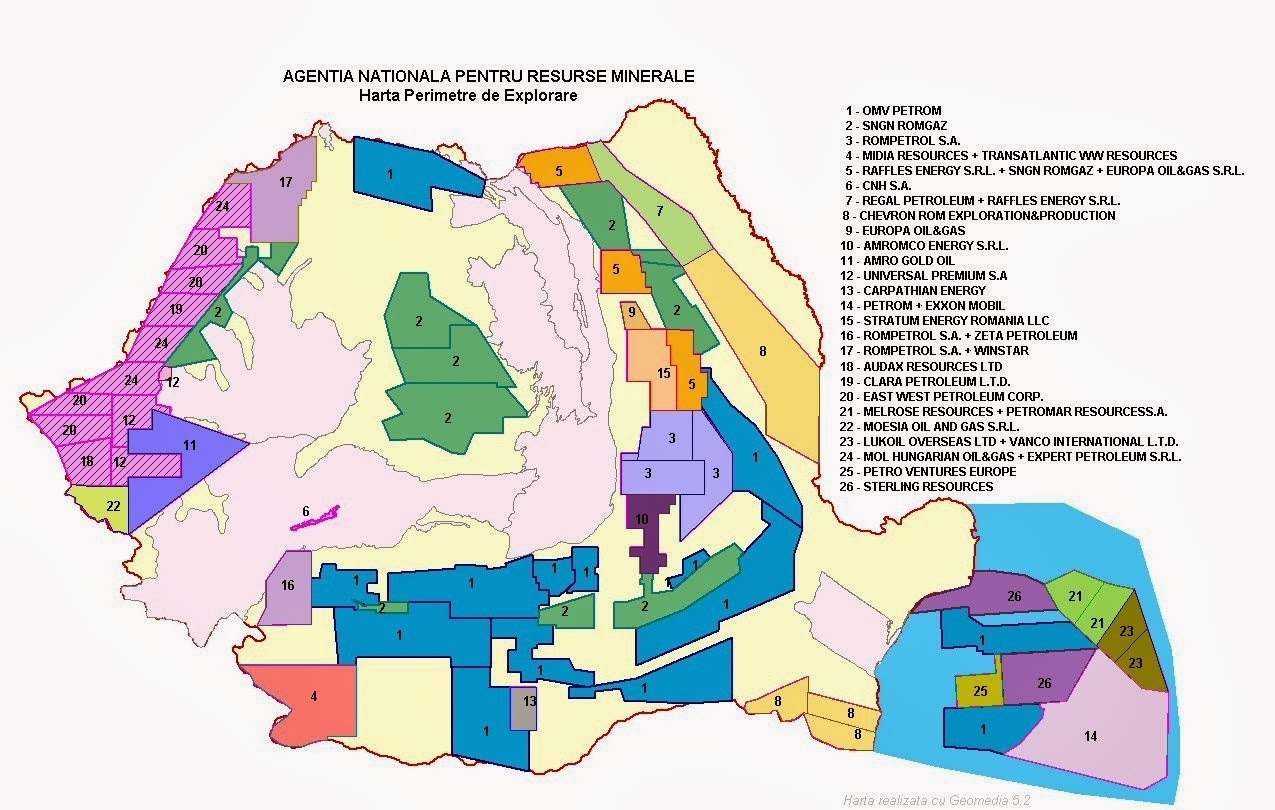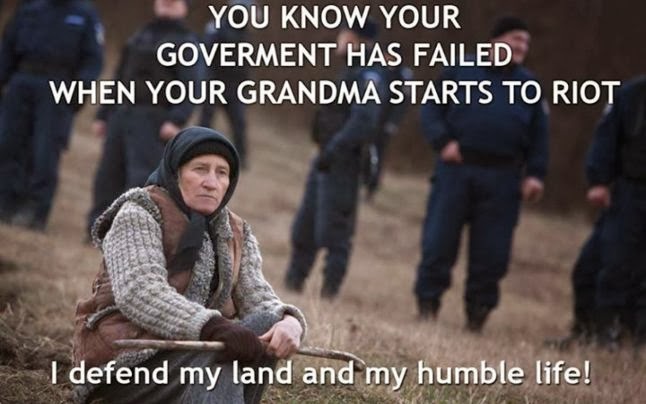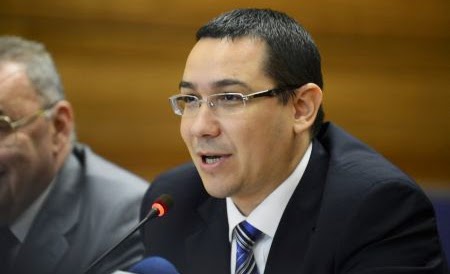Good news for anti-fracking protesters in Romania: Chevron has announced on Tuesday that drilling activities have been completed, and that they’re now analyzing the rocks, and other data collected from the operations, to determine the potential for shale gas fracking in that region of Romania. The activist website, Frack Off Romania![]() , is claiming Chevron is “pulling out” citing unofficial reports (a.k.a. rumors?) there is no natural gas potential in that area. However, news reports quoting from Chevron’s press release talk about analyzing information, implying that Chevron will return to the scene later.
, is claiming Chevron is “pulling out” citing unofficial reports (a.k.a. rumors?) there is no natural gas potential in that area. However, news reports quoting from Chevron’s press release talk about analyzing information, implying that Chevron will return to the scene later.

This story has been playing out since October 2013, with LongTailPipe coverage beginning in late December 2013. At that time Chevron’s Pungesti operation (located in northern Romania near the border with Moldova) was was thought to be the first and only hydraulic fracturing site in Romania. Villagers and others in Romania set up a permanent protest site across the highway from the Chevron site, and staged protests which drew a severe enough crackdown by government forces that some human rights groups cried foul. Then it was learned that fracking operations were widely spread across Romania. Some were set up in secret with lies told to local population about the activities.
 |
| Shale Gas deposits in Eastern Europe |
We also learned along the way that this is part of a larger plan, to begin hydraulic fracturing operations in a wide swath of Europe from Romania, through Ukraine, Poland and into the Baltic countries. At the global scale, the fossil fuel companies have mapped out all shale deposits in the world, and are seeking to set up fracking operations in every area that can produce either oil or natural gas from hydraulic fracturing. The U.S. Government is assisting with this effort through an office within the State Department, created when Hillary Clinton was Secretary of State, to push governments around the world to allow hydraulic fracturing operations into their countries. In particular the Ukraine civil war (or was it a coup?) served the purpose of allowing Chevron and Royal Dutch Shell to have unhindered access to Ukraine to pursue the fracking agreements both companies signed with Yanukovych’s government during 2013.
But, let’s get back to the new developments in Pungesti.
On Tuesday, Mediafax.ro published a report citing a Chevron Romania press release (which I’ve not found, yet) saying “Chevron announces that drilling activities were completed in the probe near the village Siliştea, Vaslui county. Drilling activities were initiated in early May 2014, following all safety and performance checks, and were completed without incident . Currently, Chevron analyze information obtained both during drilling operations and geo-physical investigations after the probe to understand the potential natural gas resources of clay” (that’s via Google Translate, original: “Chevron anunţă că activităţile de foraj de explorare au fost finalizate la sonda sa din apropierea satului Siliştea, judeţul Vaslui. Activităţile de foraj au fost demarate la începutul lunii mai 2014, după efectuarea tuturor verificărilor de siguranţă şi performanţă, şi au fost finalizate fără incidente. În prezent, Chevron analizează informaţiile obţinute atât pe parcursul operaţiunilor de foraj cât şi în urma investigaţiilor geo-fizice de sondă, pentru a înţelege potenţialul de resurse de gaze naturale din argilite”, se arată într-un comunicat transmis, marţi, corespondentului MEDIAFAX de oficialii companiei Chevron România.)
In early April, Chevron said they were ready to begin drilling for exploratory fracking. Then in early May, Chevron began drilling at the Pungesti site.
At that time Chevron said they needed 3 months (90 days) and would drill to 4000 feet deep. The total plan is to spend 5 years on exploration and otherwise developing the infrastructure and techniques required for the specific conditions in that region. That means the current drilling operation is just about drilling a hole, collecting some rock samples, and studying which chemicals will work in that shale formation.
However, Chevron is suspending work after 2 months and having drilled only 3000 feet.
According to the Frack Off Romania site![]() (an activist group), pulling out early is a sign that Chevron didn’t find frackable shale. Unnamed sources cited by that site say “the research in the laboratory has already begun and that there are no prospects for shale gas in the area of Pungesti.” If true, that indicates Chevron will simply pull out and that perhaps the whole of the shale formation is not frackable. But, as an unnamed source we can only consider this a rumor.
(an activist group), pulling out early is a sign that Chevron didn’t find frackable shale. Unnamed sources cited by that site say “the research in the laboratory has already begun and that there are no prospects for shale gas in the area of Pungesti.” If true, that indicates Chevron will simply pull out and that perhaps the whole of the shale formation is not frackable. But, as an unnamed source we can only consider this a rumor.
Chevron has additional permits for other nearby areas (in Paltinis-Bacesti and Popeni-Gagesti – some Romanian cities have hyphenated names where there is both a modern and ancient name for the same city), and in April got a building permit to begin construction of a drilling pad near Puiesti, a nearby town. Whether Chevron proceeds with activities at that site will give an indication whether Chevron believes this area is frackable, or not.
 The posting on the activist site closes saying: “The activists and the locals in Puiesti are prepared to defend their village the same way they did it in Pungesti, if the heavy machinery will start showing up.”
The posting on the activist site closes saying: “The activists and the locals in Puiesti are prepared to defend their village the same way they did it in Pungesti, if the heavy machinery will start showing up.”
Chevron, the gauntlet is thrown, the choice of action is yours. Apparently Romania’s grandmothers are waiting for you, and it’s not to cook you a pot of Sarmale.
Chevron’s press release claims activities near Pungesti concluded without incident, and that operations passed all safety checks. However, in late May anti-fracking activists reported that an on-site worker died at the site. Supposedly the worker died instantly after exposure to toxic substances stored at the well site. Chevron has not confirmed this, nor has the government even though the body reportedly was taken to the the Institute of Legal Medicine in Bacau.
The fracking industry doesn’t seem to like this disclosed – but fracking uses a witches brew of toxic chemicals, and that at least one other worker has died of exposure to those chemicals. Another risk to workers is a condition called silicosis, which comes from breathing in the fine-grained sand used in fracking operations. That sand can make it through filters in air masks, lodge in the lungs, forming silica deposits, making it difficult to breath.
On Thursday (today), ActMedia reported![]() that a court in Iasi (the local regional capital) rejected a demand made by the The Initiative Group of Barlad Civil Society (GISC) to suspend Chevron’s permission to continue operations in Silistea-Pungesti, Popeni- Gagesti and Paltinis-Bacesti localities. Because the court rejected GISC’s demand, Chevron can continue their operations. GISC does have the right to appeal the decision.
that a court in Iasi (the local regional capital) rejected a demand made by the The Initiative Group of Barlad Civil Society (GISC) to suspend Chevron’s permission to continue operations in Silistea-Pungesti, Popeni- Gagesti and Paltinis-Bacesti localities. Because the court rejected GISC’s demand, Chevron can continue their operations. GISC does have the right to appeal the decision.
 |
| Prime Minister Victor Ponta |
Business Review reports![]() that Chevron has other concessions near the Black Sea coast, and describes a statement by Prime Minister Victor Ponta as “He now says that shale along offshore can help Romania strike energy sufficiency and cut its dependency on expensive gas imports from Russia.” Is the focus for shale gas development in Romania shifting to the Black Sea coast?
that Chevron has other concessions near the Black Sea coast, and describes a statement by Prime Minister Victor Ponta as “He now says that shale along offshore can help Romania strike energy sufficiency and cut its dependency on expensive gas imports from Russia.” Is the focus for shale gas development in Romania shifting to the Black Sea coast?
While we understand the enthusiasm of the activists to declare victory, I cannot say at this time it’s a verifiable fact that Chevron is simply pulling out. Chevron engineers may well be studying samples in the laboratory and determining the specific witches brew required for that shale deposit, and they may well return in a few months.
One strong sign would be whether Chevron starts construction at the Puiesti site.
- Highway design could decrease death and injury risk, if “we” chose smarter designs - March 28, 2015
- GM really did trademark “range anxiety”, only later to abandon that mark - March 25, 2015
- US Government releases new regulations on hydraulic fracturing, that some call “toothless” - March 20, 2015
- Tesla Motors magic pill to solve range anxiety doesn’t quite instill range confidence - March 19, 2015
- Update on Galena IL oil train – 21 cars involved, which were the supposedly safer CP1232 design - March 7, 2015
- Another oil bomb train – why are they shipping crude oil by train? – Symptoms of fossil fuel addiction - March 6, 2015
- Chevron relinquishes fracking in Romania, as part of broader pull-out from Eastern European fracking operations - February 22, 2015
- Answer anti- electric car articles with truth and pride – truth outshines all distortions - February 19, 2015
- Apple taking big risk on developing a car? Please, Apple, don’t go there! - February 16, 2015
- Toyota, Nissan, Honda working on Japanese fuel cell infrastructure for Japanese government - February 12, 2015












